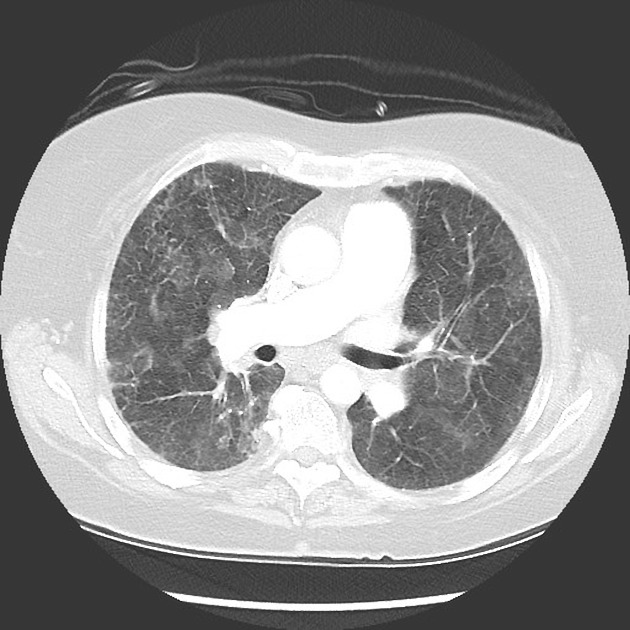Pulmonary capillary haemangiomatosis (PCH) is a rare vascular proliferative condition that can lead to pulmonary hypertension. Some authors consider it as a form of low-grade neoplasia 8, and it is still controversial if PCH and pulmonary veno-occlusive disease (PVOD) are varied expressions of the same condition or different entities.
It is characterized by multiple angiomatous lesions composed of proliferating capillary vessels in the lung parenchyma and usually progresses to fatal pulmonary hypertension 1. At the time of initial writing, the etiology and inheritance pattern was not well known 10.
On this page:
Epidemiology
It is thought to typically affect children and young adults 8-9.
Clinical presentation
The clinical presentation overlaps that of primary pulmonary hypertension.
Pathology
Pathologically, PCH is characterized by the proliferation of benign thin-walled capillary-sized blood vessels within the lung parenchyma 5. Proliferating capillaries invade the pulmonary interstitium and alveolar septae and occlude the pulmonary vasculature. Invasion of pulmonary veins and, less frequently, pulmonary arteries can be common 8.
Radiographic features
CT
The typical radiographic appearance described is that of a diffuse bilateral reticulonodular pattern associated with enlarged central pulmonary arteries 3.
This pattern is often mixed with lobular ground-glass opacities 6. The left atrium is normal or small in outline 6.
Treatment and prognosis
The natural history of pulmonary capillary haemangiomatosis is one of rapid deterioration 3. Lung or heart-lung transplantation may be the only curative therapeutic option where pharmacologic agents serve only as supportive care and a bridge to transplantation (although treatment with vasodilators will lead to more rapid deterioration) 6. PCH has not been reported to recur after transplantation. There are occasional reports of successful antiangiogenic therapy with Doxycycline 10.
History and etymology
It was first described by Wagenvoort et al. in 1978 9.





 Unable to process the form. Check for errors and try again.
Unable to process the form. Check for errors and try again.